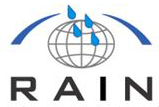When subsidence flow occurs, material is eroded from the top of the underwater slope, which in turn can damage the dike. The process lower down in the slope, namely the flowing away of a sand-water mixture, greatly resembles “turbidity currents”, a common phenomenon in seas and oceans. Turbidity currents form a serious threat for important seabed infrastructure such as glass fibre cables and oil pipelines.
This video (in Dutch) shows a trial in order to get an understanding what happens during subsidence flow.
The current calculation models for flow slide are based on theoretical knowledge and (numerous) scaled tests carried out in recent decades. These models only give the conditions for flow slide, and complex scaling rules render the applicability of the models in a real life scale very uncertain indeed. This trial is the first comprehensive trial against which the models can be calibrated. The trial will also provide insight into the progress and consequences of the process, such as the flow of the sand-water mixture and the influence of weakening and breaches. Applied research, including field trials, can reduce the uncertainty with which calculations are currently made. Models can be improved and savings realised in terms of reinforcement measures.
The trial results will contribute to a better understanding of turbidity currents and the models used to predict them. There is therefore international interest in the trial from the point of view of pipeline management.
Stichting IJkdijk is formed by Deltares, NV NOM, STOWA, TNO, the Dutch business community and Sensor Universe (formerly the IDL foundation).
More info: ijkdijk.nl/en/experiments/subsidence-flow
Produced by: Recall Multimedia
Year:
Language: Dutch
Region: Netherlands, Europe
